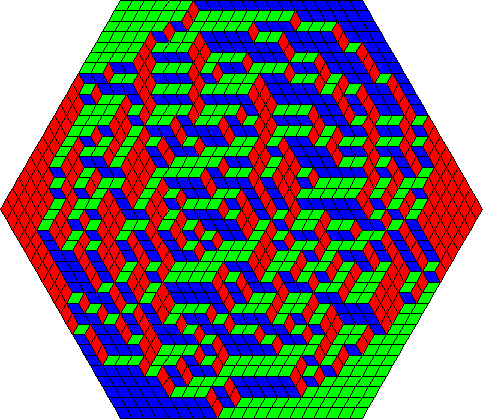The McMahon formula for the number of tilings of an $a \times b \times c$ hexagon by lozenges:
$$ \Big[H(a)H(b)H(c)\Big] \Big[H(a+b)H(b+c)H(c+a)\Big]^{-1} \Big[H(a+b+c)\Big]$$
looks oddly like the inclusion-exclusion formula:
$$ |A \cup B \cup C| = |A|+|B|+|C| - |A \cap B| - |B \cap C| - |C \cap A| + |A \cap B \cap C|$$
Here $H(a) = 1! 2! \dots a!$ is the hyperfactorial.
Perhaps there is a more general explanation via Gelfand-Tsetlins or something?

(source: microsoft.com)
